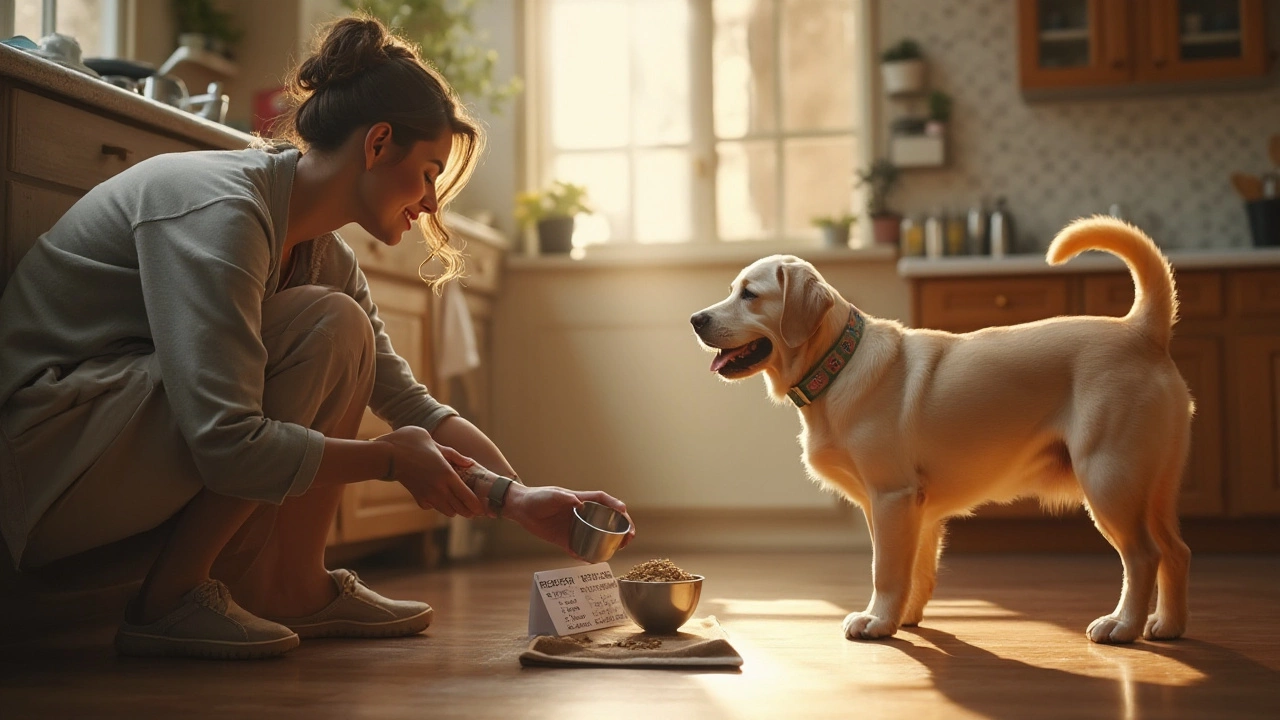Dog Feeding Schedule: Easy Steps for a Healthy, Happy Pup
Getting your dog's meals right can feel like a puzzle, but it doesn't have to be. A solid feeding schedule keeps energy steady, supports growth, and makes bathroom breaks predictable. Below you'll find plain‑spoken advice you can start using tonight.
How to Calculate Your Dog’s Daily Food Amount
First, figure out how many calories your dog needs. Most kibble bags give a rough calorie count per cup, so grab that number. Then use a quick rule of thumb: small breeds (under 20 lb) need about 30 cal per pound, medium breeds (20‑50 lb) around 25 cal per pound, and large breeds (over 50 lb) roughly 20 cal per pound. Multiply the weight by the appropriate number and you have a daily calorie target.
Next, convert calories to cups. If the food label says 350 cal per cup and your dog needs 700 cal, that's two cups a day. Adjust up or down if your pup is very active, pregnant, or a senior with a slower metabolism.
Putting the Schedule Into Action
Split the daily amount into two or three meals. Most adult dogs do fine with two meals—morning and evening—while puppies usually need three to four smaller meals to keep blood sugar stable. Choose consistent times, like 7 am and 6 pm, and stick to them. Dogs thrive on routine; the same clock‑time each day reduces anxiety and makes house‑training easier.
Use a kitchen measuring cup for every feeding. It sounds boring, but an extra ounce or two can quickly turn into extra pounds. Write down the cup amount next to the feeding time on a fridge note, so everyone in the household knows the exact portion.
Don't forget water. Fresh water should be available at all times, especially if you feed dry kibble. Change the bowl daily and clean it regularly to prevent bacterial growth.
If you like to give treats, count them toward the daily calorie total. A handful of training biscuits can add up fast. A simple trick: replace a small part of the meal with treats rather than adding them on top.
Watch your dog's weight and stool quality. If you notice a dip in energy, weight loss, or softer stools, reassess the portion size or food type. Likewise, a gradual weight gain signals you need to cut back a bit.
Special situations call for schedule tweaks. On very hot days, some dogs eat less, so you might slightly reduce the portion or offer meals earlier when it's cooler. After a vigorous hike, a small extra snack can help replenish energy, but keep it within the daily calorie budget.
Finally, mark any changes. Use a simple log—date, time, amount, and any observations like “more water” or “loose stool.” Over weeks you’ll see patterns and can fine‑tune the schedule without guessing.
Stick to these steps and you’ll give your dog a clear, balanced eating plan that supports good health and a happier life. Remember: consistency is the secret sauce, and a little math goes a long way toward a fit, content pup.
Optimal Feeding Schedule: How Often Should Your Dog Eat?
Deciding how frequently your dog should eat is key to maintaining their overall health and wellness. From puppies to senior dogs, each stage of life requires a different feeding approach. This article discusses recommended meal frequencies, factors to consider when creating a feeding plan, and tips for ensuring your pet's nutritional needs are met. By the end, you'll have a clear understanding of how to keep your dog healthy and satisfied.
